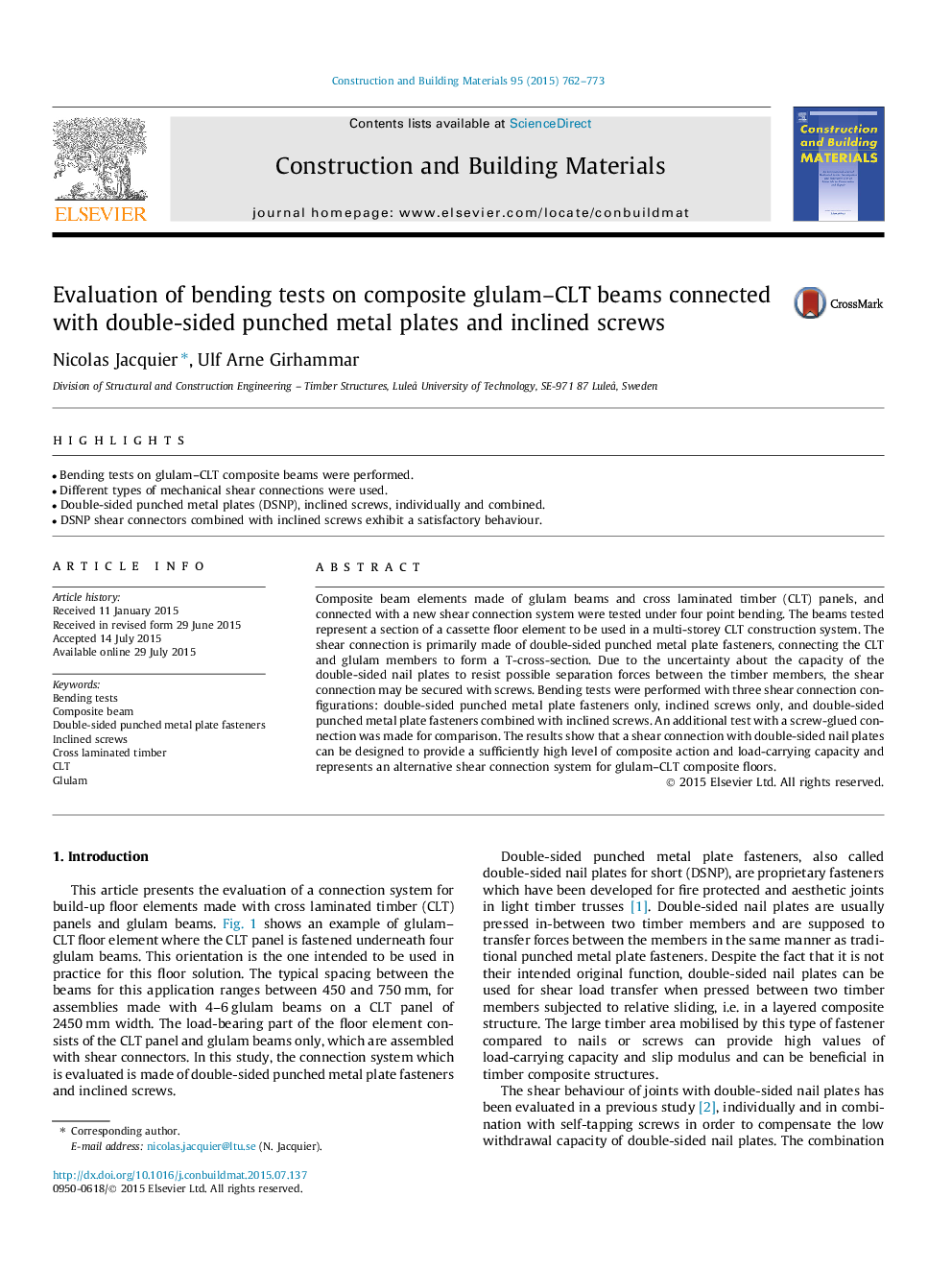| Article ID | Journal | Published Year | Pages | File Type |
|---|---|---|---|---|
| 256829 | Construction and Building Materials | 2015 | 12 Pages |
•Bending tests on glulam–CLT composite beams were performed.•Different types of mechanical shear connections were used.•Double-sided punched metal plates (DSNP), inclined screws, individually and combined.•DSNP shear connectors combined with inclined screws exhibit a satisfactory behaviour.
Composite beam elements made of glulam beams and cross laminated timber (CLT) panels, and connected with a new shear connection system were tested under four point bending. The beams tested represent a section of a cassette floor element to be used in a multi-storey CLT construction system. The shear connection is primarily made of double-sided punched metal plate fasteners, connecting the CLT and glulam members to form a T-cross-section. Due to the uncertainty about the capacity of the double-sided nail plates to resist possible separation forces between the timber members, the shear connection may be secured with screws. Bending tests were performed with three shear connection configurations: double-sided punched metal plate fasteners only, inclined screws only, and double-sided punched metal plate fasteners combined with inclined screws. An additional test with a screw-glued connection was made for comparison. The results show that a shear connection with double-sided nail plates can be designed to provide a sufficiently high level of composite action and load-carrying capacity and represents an alternative shear connection system for glulam–CLT composite floors.
